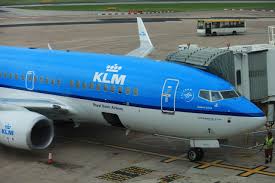The Rise of Sonic Boom Aircraft: Innovations in Aviation

Introduction to Sonic Boom Aircraft
Sonic boom aircraft represent a significant frontier in aviation technology, promising to revolutionise air travel by allowing planes to fly faster than the speed of sound without the disruptive sonic booms that have historically limited their use. As concerns about environmental impact and the efficiency of air travel grow, the development of these aircraft has become increasingly crucial.
Recent Developments in Sonic Boom Aircraft
In recent months, various aerospace companies have made headlines with their innovative approaches to sonic boom aircraft. Notably, NASA is working in partnership with Lockheed Martin on the X-59 QueSST, a prototype aircraft designed to minimise the noise of sonic booms. This aircraft aims to demonstrate that supersonic flights can be performed over land with minimal disturbance to communities below.
In July 2023, NASA announced progress on the X-59 after successful ground tests, moving towards its anticipated first flight. The aircraft’s design incorporates a unique shape to reduce the intensity of the sonic boom, aiming to turn it into a quiet ‘thump’, significantly less disruptive than traditional supersonic flights.
The Potential Impact on Aviation and Travel
The return of supersonic travel could shorten flight times dramatically. For instance, a flight from New York to London, which currently takes about seven hours, could be reduced to just over three hours with the proposed technology. The commercial implications are immense, opening new routes and increasing competition within the aviation market.
Additionally, with ongoing advancements in sustainable aviation fuel and electric propulsion, there is potential for sonic boom aircraft to operate with reduced carbon footprints. This dual focus on speed and sustainability is driving investment and interest in new aircraft designs.
Challenges Ahead
Despite the excitement surrounding sonic boom technology, there remain significant challenges. Regulatory hurdles must be addressed, particularly concerning flight restrictions over populated areas. The FAA and international aviation authorities will need to adapt existing guidelines to accommodate these innovations.
Conclusion: The Future of Sonic Boom Aircraft
The potential of sonic boom aircraft to transform air travel is promising, with the possibility of making long-distance flights significantly faster and more efficient. As technology advances and testing progresses, it is crucial for stakeholders—including government regulators, manufacturers, and environmental groups—to collaborate in shaping the future of supersonic travel. The success of these innovations could redefine our approach to air travel, making it faster, quieter, and more sustainable.
You may also like

KLM’s Recent Innovations and Industry Adaptations

Eileen Collins: Pioneering Female Astronaut and Commander
